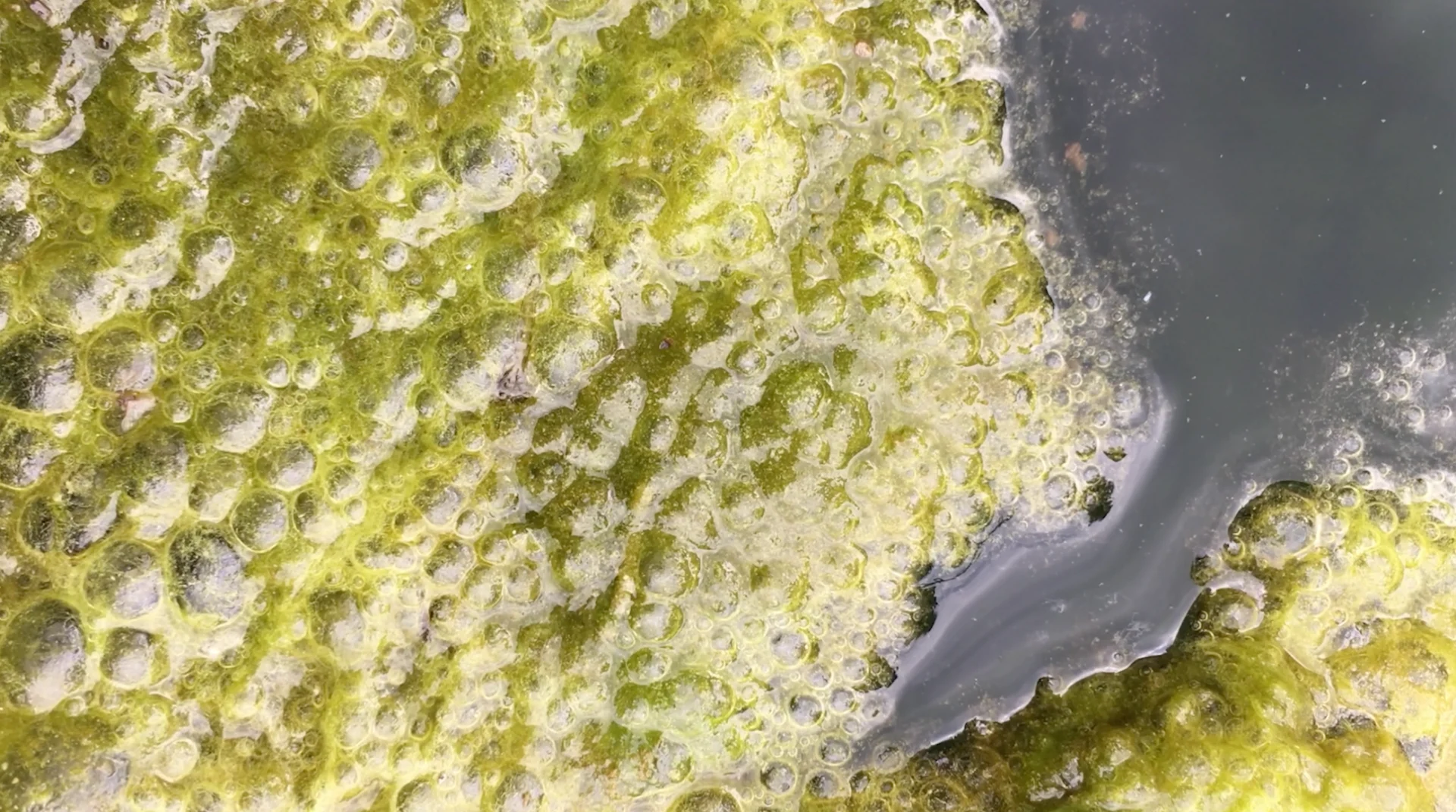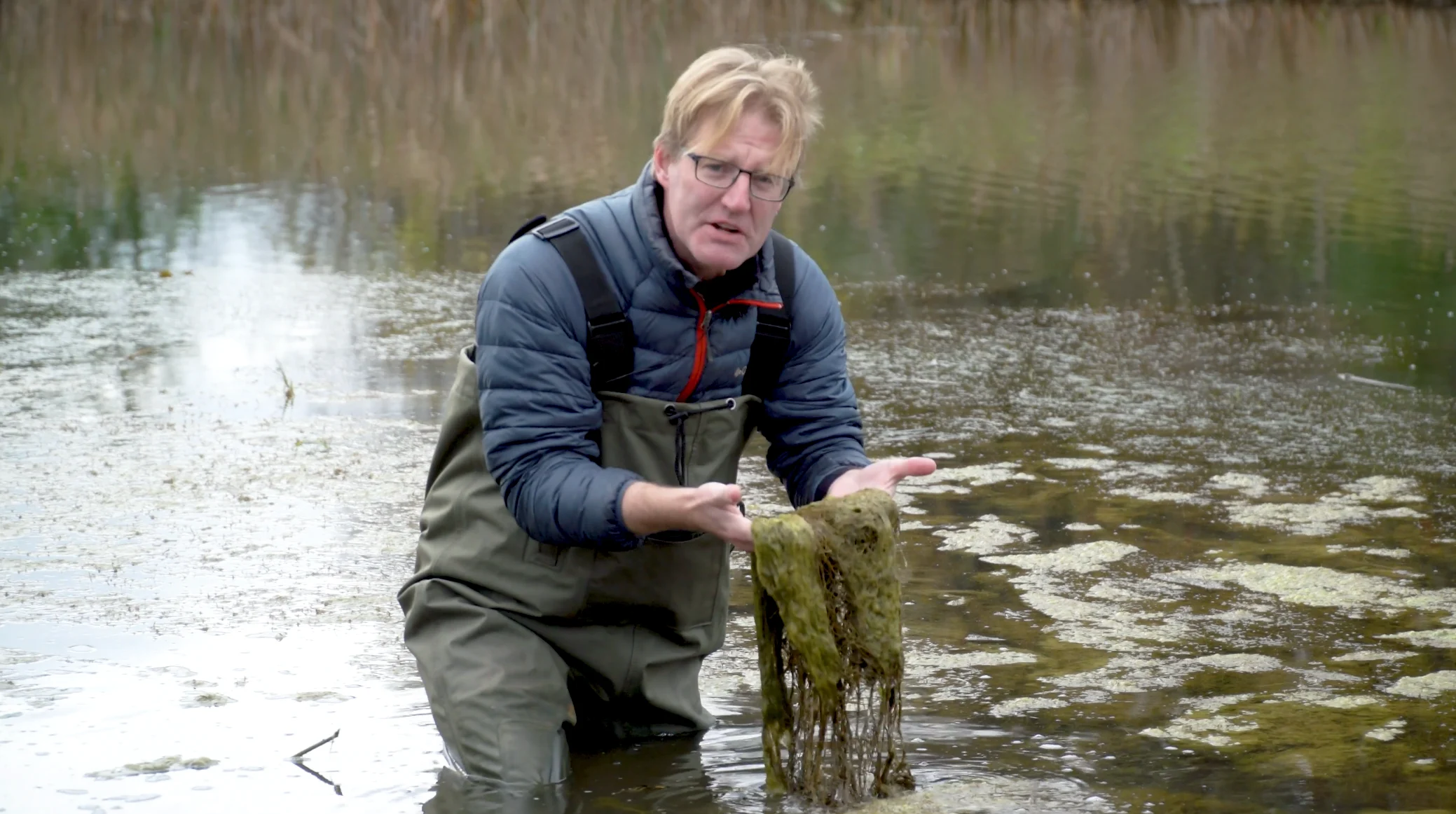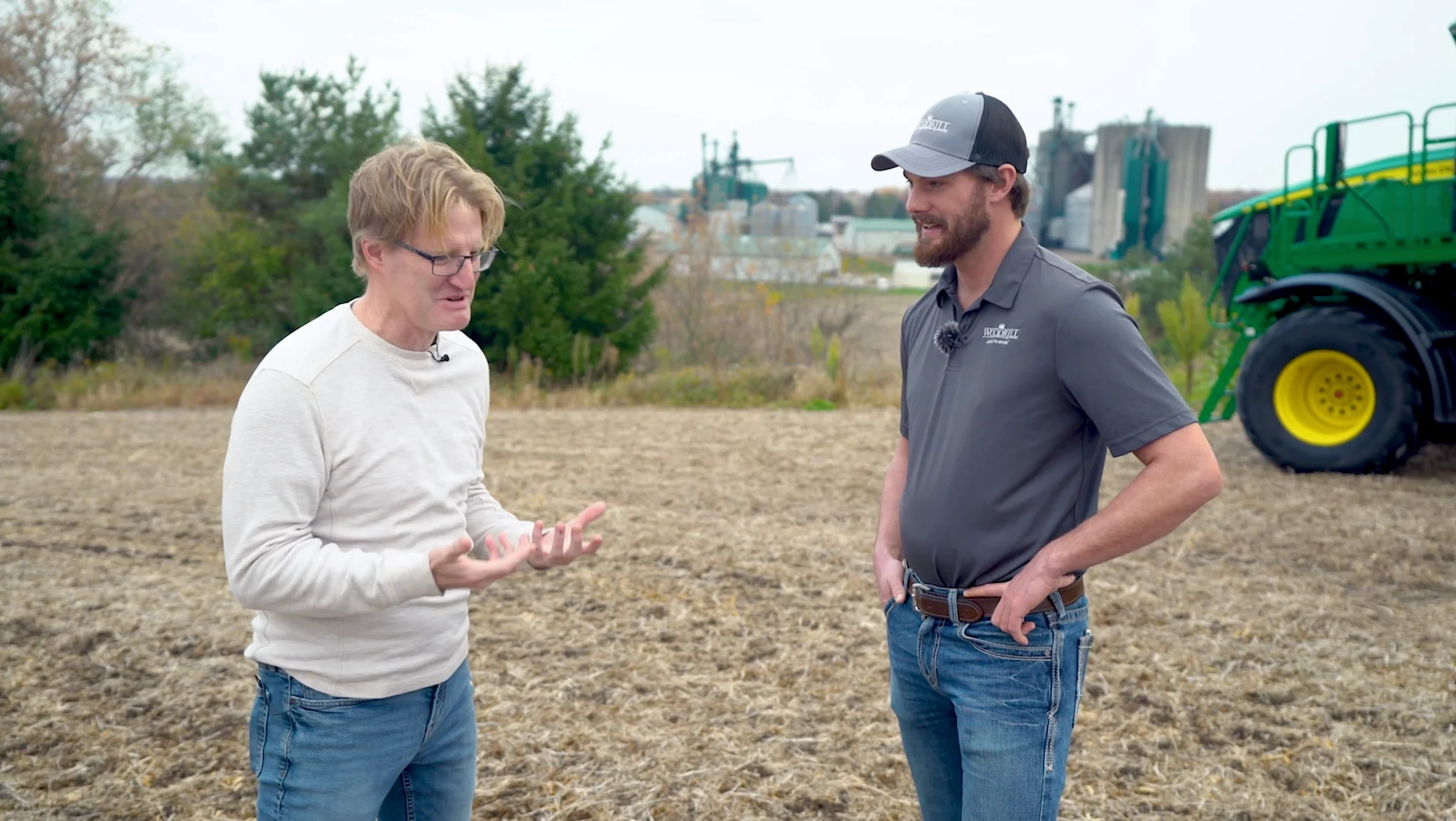
Blooming Peril: Should we be worried about algae blooms?
In this episode of Climate Refuge, The Weather Network's Mark Robinson explores algae blooms and finds out what they are and if they're dangerous to us and the ecosystem. Throughout the episode, he also explores the relationship between farming and our waterways to highlight the importance of adopting environmentally friendly agricultural practices in creating a more sustainable food production system.
Grabbing a handful of algae, I saw Dave Hodge, the cameraman, and Veronika Homer, the producer, make hilariously disgusted faces as I launched into my intro (seen in the video above): “I’ve been all over the world; I’ve seen climate change from the front lines in places like Antarctica and Mount Everest, but I’ve never really thought about my own neighbourhood. After a bit of looking around, it seems like the Great Lakes will be one of the best places in North America to live through the changes that are coming. That means that a lot of people are about to move into the region. But how do we deal with that many people moving into the neighborhood? The Great Lakes might seem endless, but they’re more fragile than we think."
As I finished, I slogged myself out of the water and out of the algae, but the smell and the problem that it represented still clung to the hip waders that had let me get into the cool waters of the pond. This was just the first step in a long journey. Next step: find out more about the connection between algae, fertilizer, and the influx of millions of people into the Great Lakes region.
You’ve likely heard of algae blooms or maybe seen or smelled the effects that these events can have on a lake. Green waters, smelly sludge, dead or dying fish—some or all of these can be part of a harmful algae bloom. I knew only a little about how they happen and what brought them on, but I didn’t know how they’d be affected if 20 million more people moved into the Great Lakes area.

Algae blooms can be a symptom of a much larger problem (Pictured: Meteorologist Mark Robinson/The Weather Network)
To figure out what might happen, I needed to dig into the basic science of what an algae bloom actually was. To do that, the team arranged a meeting with Dr. Soren Brothers, the head of climate change at the Royal Ontario Museum. My first question was what an algae bloom really is.
“An algae bloom is the proliferation of algae, so it’s the growth of algae—that green scum that you see on the surface of a lake," Dr. Brothers explained. "You can have different types of algae blooms. You can have harmful algae blooms that are caused by cyanobacteria, so [they're] not caused by algae, but we call them blue-green algae. You can also have a filamentous algae blooms; you sometimes see this long, snotty-like stuff growing on rocks.”
“Algae should be eaten and not seen. In some cases, you don’t have enough grazing of algae. That’s what we call a top-down release. Usually, what we’re looking at is bottom-up, when we have too much nutrients. When we have too much growth for the ecosystem to handle. When you see it, you can more or less call it a bloom.”

Filamentous algae blooms can sometimes be seen growing on rocks (The Weather Network)
Lots of algae comes from lots of nutrients, and those come from two places: farm fields and sewage treatment plants.
“Fertilizers are used on fields for plant growth. They also come from us; they’re in the sewage, so if that’s not properly treated, that can lead to algae."
"If you have an unexpected storm event that comes right after that fertilizer has been laid, a lot of that just goes straight into the waterways instead of into our plants. We’re in this situation right now that it becomes a little bit harder to predict for farmers when they should be fertilizing their fields and with how much because you can have sudden, unexpected storms more than we did historically.”
That led to a new line of inquiry: where did the nutrients that fed the algae come from? To answer that, I headed out to Woodrill Farms in Guelph, Ont., to talk to Luke Hannam, one of the many farmers in the area.

Mark Robinson (left) pictured with Luke Hannam of Woodrill Farms
We chatted in the shadow of the massive fertilizer spreader that looked more like something you might imagine in a cyberpunk movie than a machine that had more in common with little buckets on wheels that I use to fertilize my lawn.
Luke emphasizes a critical stage in fertilizer application: knowing what’s in the dirt.
“There’s nutrients in the soil that crops need to grow, so what we do is send a soil sample to figure out what’s in that soil and what we need to add for the crop we’re going to grow next," Hannam explained. "That way, we can top up the nutrients for that crop to succeed."
Fertilizer is expensive, especially with food demand increasing and geopolitical disruptions increasing in even far-flung regions like Ukraine and Russia. That means that adding more than what is needed can be like throwing money away. Farming is, at its root, a business, and most farmers have razor-thin margins, so even minor waste can add up fast.
That isn’t to say that there’s no excess nutrients coming off fields. Sudden, high precipitation storms right after fertilizer application can ensure that nutrients are washed into the waterways, but farmers are trying to mitigate that through changes in field dynamics and the timing of fertilizer application.
The other large source of nutrients for algae growth comes from what happens after we’ve eaten the crops that come from the fields, but that’s something we’re going to look into a lot closer (ok, maybe that’s not the best way to put that…) in the next chapter.












